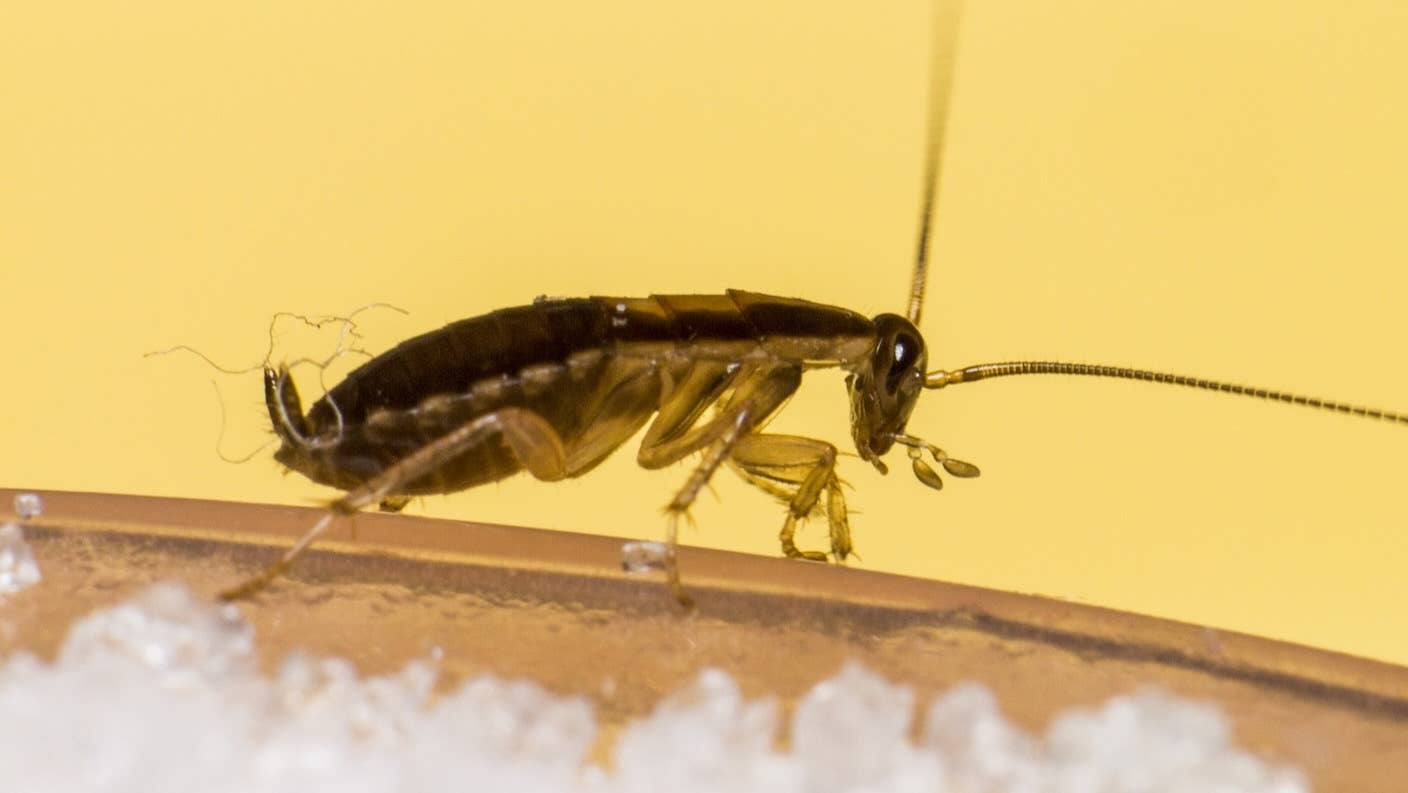Automated Cyborg Cockroach Factory Could Churn Out a Bug a Minute for Search and Rescue

Share
Envisioning armies of electronically controllable insects is probably nightmare fuel for most people. But scientists think they could help rescue workers scour challenging and hazardous terrain. An automated cyborg cockroach factory could help bring the idea to life.
The merger of living creatures with machines is a staple of science fiction, but it’s also a serious line of research for academics. Several groups have implanted electronics into moths, beetles, and cockroaches that allow simple control of the insects.
However, building these cyborgs is tricky as it takes considerable dexterity and patience to surgically implant electrodes in their delicate bodies. This means that creating enough for most practical applications is simply too time-consuming.
To overcome this obstacle, researchers at Nanyang Technological University in Singapore have automated the process, using a robotic arm with computer vision to install electrodes and tiny backpacks full of electronics on Madagascar hissing cockroaches. The approach cuts the time required to attach the equipment from roughly half an hour to just over a minute.
“In the future, factories for insect-computer hybrid robot[s] could be built to satisfy the needs for fast preparation and application of the hybrid robots,” the researchers write in a non-peer-reviewed paper on arXiv.
“Different sensors could be added to the backpack to develop applications on the inspection and search missions based on the requirements.”
Cyborg insects could be a promising alternative to conventional robots thanks to their small size, ability to operate for hours on little food, and their adaptability to new environments. As well as helping with search and rescue operations, the researchers suggest that swarms of these robot bugs could be used to inspect factories.
The researchers had already shown that signals from electrodes implanted into cockroach abdomens could be used to control the direction of travel and get them to slow down and even stop. But installing these electrodes and a small backpack with control electronics required painstaking work from a trained researcher.
That kind of approach makes it difficult to scale up to the hundreds or even thousands of insects required for practically useful swarms. So, the team developed an automated system that could install the electronics on a cockroach with minimal human involvement.
Be Part of the Future
Sign up to receive top stories about groundbreaking technologies and visionary thinkers from SingularityHub.


First, the researchers anesthetized the cockroaches by exposing them to carbon dioxide for 10 minutes. They then placed the bugs on a platform where a pair of rods powered by a motor pressed down on two segments of their hard exoskeletons to expose a soft membrane just behind the head.
A computer vision system then identified where to implant the electrodes and used this information to guide a robotic arm carrying the electronic backpack. Electrodes in place, the arm pressed the backpack down until its mounting mechanism hooked into another section of the insect’s body. The arm then released the backpack, and the rods retracted to free the cyborg bug.
The entire assembly process takes just 68 seconds, and the resulting cockroaches are just as controllable as ones made manually, the researchers found. A four-bug team was able to cover 80 percent of a 20-square-foot outdoor test environment filled with obstacles in about 10 minutes.
Fabian Steinbeck at Bielefeld University in Germany told New Scientist that using these cyborg bugs for search and rescue might be tricky as they currently have to be controlled remotely. Getting signal in collapsed buildings and similar challenging terrain would be difficult, and we don’t yet have the technology to get them to navigate autonomously.
Rapid improvements in both AI and communication technologies could soon change that though. So, it may not be too far-fetched to imagine swarms of robot bugs coming to your rescue in the near future.
Image Credit: Erik Karits from Pixabay
Related Articles

How Scientists Are Growing Computers From Human Brain Cells—and Why They Want to Keep Doing It

Scientists Say We Need a Circular Space Economy to Avoid Trashing Orbit

Scientists Race to Deliver Custom Gene Therapies for Incurable Diseases in Weeks—Not Years
What we’re reading
